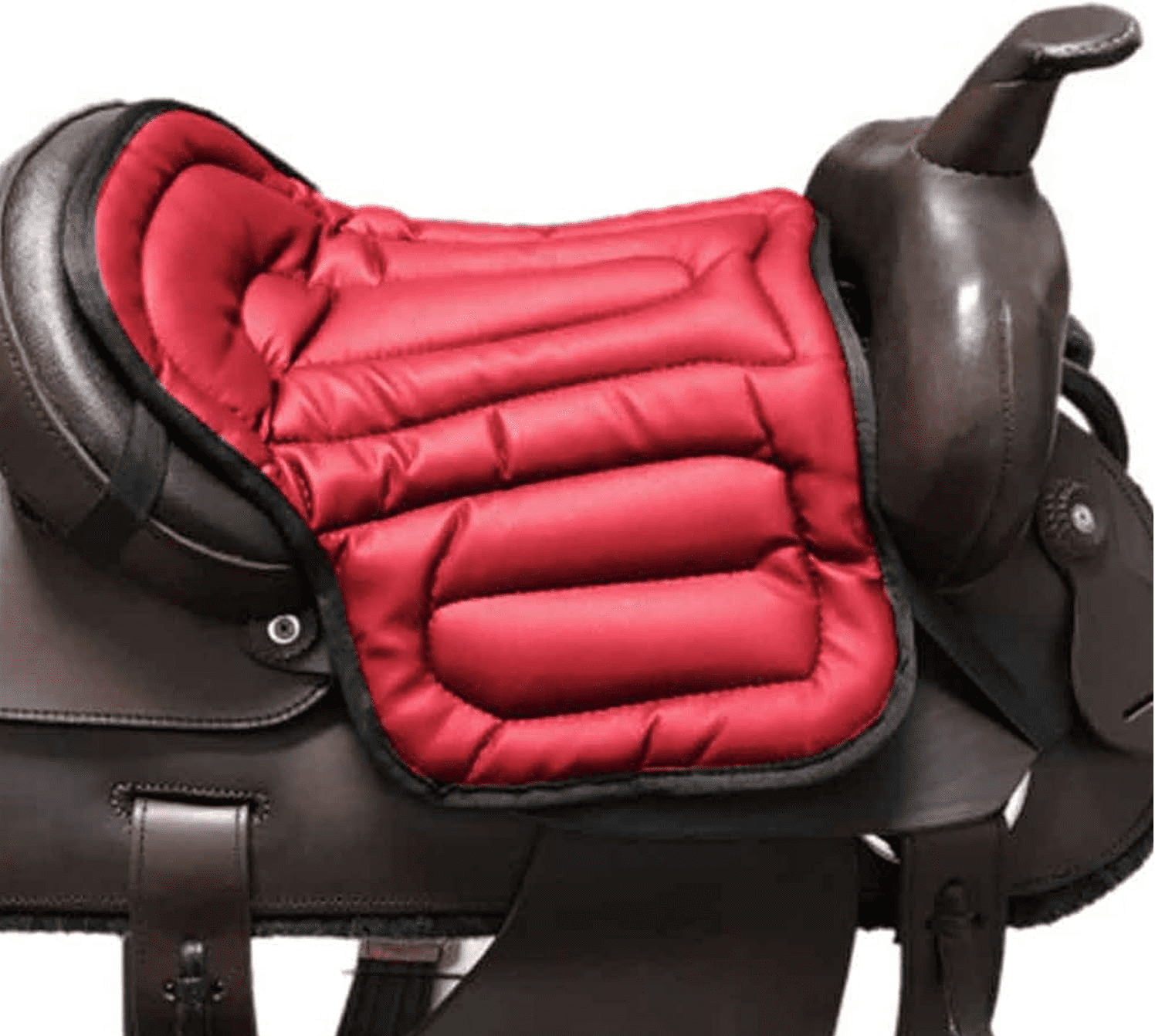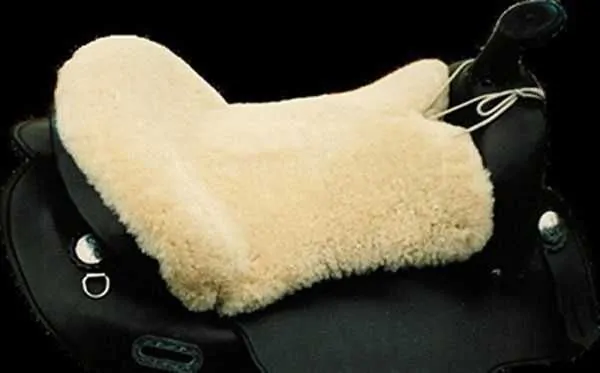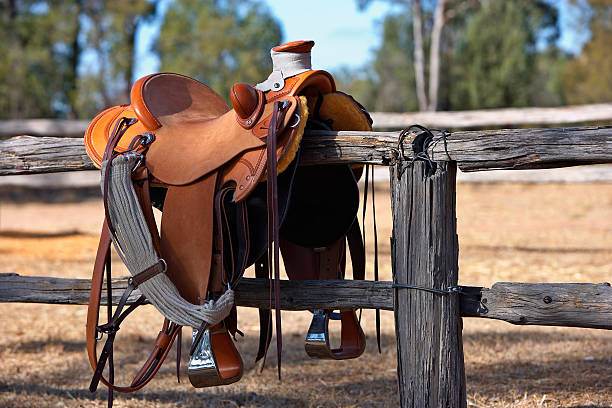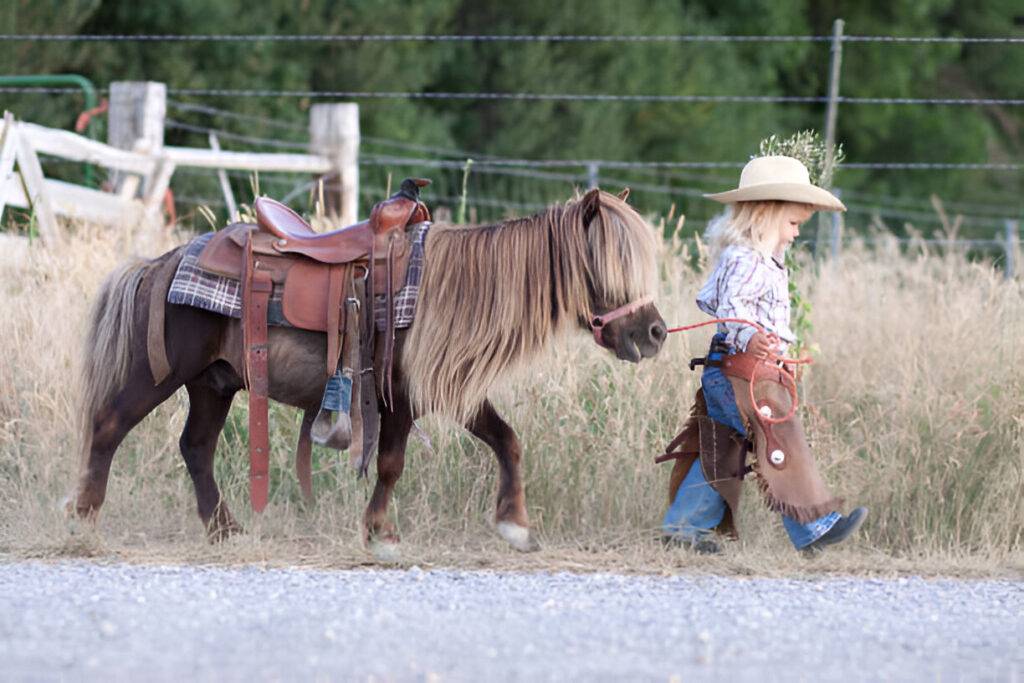
The Complete Guide to Western Saddle Cushions: Comfort for You and Your Horse

A well-crafted western saddle with proper cushioning for rider comfort
The saddle’s comfort can, therefore, create or break the experience of western riding. Long trail rides over tough terrain call for a well-cushioned western saddle, much like precision maneuvers in an arena that need to be sashed with the comfort of the rider-an uncomfortable saddle becomes a bitter aspect of joy. This guide intends to be a one-stop reference for everything concerning western saddle cushions, covering types of western saddle cushions and factors to consider when choosing the saddle cushion that fits your special needs.
Understanding Western Saddle Cushions
Originally, Western saddles were designed to accommodate ranch work and long hours in the saddle, riding despite rough terrain, with traditional western saddles being comfortable. Though modern saddle cushions and seat savers are available which enhance any additional comfort, protection, and companionship for both horse and rider, accessories even turn some of the stiffest saddles into a relatively comfortable riding platform.
What Are Western Saddle Cushions?
Cushions for Western saddle, also called seat savers or seat makers, are unique pads that sit over or under the seat of a Western saddle. Unlike saddle pads that are placed between the saddle and the horse, saddle cushions are intended to provide the rider additional comfort, shock absorption, and sometimes therapeutic support. Good-quality cushions reduce the impact felt on your back and tailbone while improving your riding posture and stability.

A gel-based western saddle cushion designed for shock absorption and rider comfort
Benefits of Using a Western Saddle Cushion
- Enhanced Comfort – Lessens pressure points and distributes rider weight more uniformly.
- Reduced Back Pain – It absorbs shocks and impacts to help with lower-back discomfort during prolonged rides.
- Improved Riding Position – It can correct your poor posture and stabilize your seat.
- Increased Saddle Longevity – It protects the leather seat of your saddle from wear and tear.
- Better Riding Experience – Less fatigue means you can focus even more on your horse and riding technique.
- Customized Fit – Can be used to adjust a saddle that is not a perfect fit for your anatomy.
Shock Absorption – Dampens impact from trotting, loping, and rough terrain. A high-quality saddle cushion can make even a mediocre saddle fit become that of a custom-made for the rider’s body. ThinLine Global quotes one of its testimonials: “I found myself sitting closer and quieter, feeling more secure. I rode for three days with the seat maker then I took it off. I would consider myself a pretty good rider but after I removed it I could feel just how much I was really shifting around and over cuing my horse.”
Types of Western Saddle Cushions
Western saddle pads are available in various materials and styles, each with its advantages and disadvantages. An understanding of the pros and cons of each type will help in selecting one best suited to your particular needs.
Material-Based Classifications
1. Sheepskin/Wool Cushions

Plush sheepskin saddle cushion with natural temperature regulation properties
Features:
- A natural substance displays ample temperature control properties.
- Gives good cushioning and comfort while allowing for breathability
- Draws moisture away from the body due to the natural permeability.
- Available in either natural or synthetic options.
Benefits:
- Keeps you warm and toasty through blistering winters
- Cool with refreshing breezes through sweltering summers
- Adapts to the rider’s body contours, naturally
- Softly cushioned but not heavily padded
- Works against saddle sores during prolonged rides
Drawbacks:
- Natural sheepskin requires maintenance.
- It may prove to be costlier than other alternatives.
- It may flatten after heavy use.
- It is not always waterproof, although some treated versions are available.
2. Gel/Memory Foam Cushions
Features:
- Modern technology that absorbs impact and pressure
- Definitely gives an area-specific support for sensitive areas of the body
- Often combines one or other materials, either of them like foam or fleece
- Is available in different thicknesses.
Benefits:
- Highly Infusible Shock Absorption: for rugged terrains
- Body contoured: for that personal touch of comfort
- Possibly includes cooling technology
- Excellent in cases like back pain or tailbone problems
Drawbacks:
- Heavier than other types
- Too thick for the saddle fit
- Cold weather can harden some gels.
- Expensive for higher-end models.
3. Foam/Neoprene Cushions
Features:
- It is wide-ranging in terms of viability offered.
- potential densities can be lied.
- The prices will commonly remain cheap next to the other wise left expensive choices.
- Planting it is very rare and very an easy task.
Benefits:
- Great water resistance
- Doesn’t absorb sweat, odors
- Lightweight addition to the saddle
- Comes with non-slip backing in most instances
Drawbacks:
- Possibly not offering the same level of cushioning as gel or sheep fleece.
- Gets hot on summer days.
- Cheaper models can quickly lose their bounce.
- Not as durable compared to different materials.
4. Air/Inflatable Cushions
Features:
- Anyone can firm up the air pressure via the pumping system, which consists of a removal mechanism as well.
- A setup that lacks springs is usually lightweight and usually enclosed in fabric for additional padding during sleep.
- Pressure is pretty much distributed evenly through this mechanism.
Benefits:
- Here, the adaptation has to meet rider requirements.
- It has an adjustment range for various riding styles.
- On one hand, they avoid interfering with saddle balance as they’re quite lightweight.
- A sort of good-fitting alternative for anyone with their own pressure point worries.
Drawbacks:
- There is a risk of leakage or puncture.
- Some riders might feel a bit lopsided on this.
- It can sometimes be influenced by temperature change.
- Requires to keep an eye on air pressure.
Design-Based Classifications
| Cushion Type | Description | Best For |
|---|---|---|
| Full Seat | Covers the entire seating area from pommel to cantle | All-day comfort, maximum protection, complete saddle coverage |
| Half Seat | Covers only the back portion of the saddle | Riders who need tailbone relief but want more contact in the front |
| Contoured | Specifically shaped to match saddle topography | Perfect fit without bunching or shifting during rides |
| Therapeutic | Designed with medical needs in mind | Riders with back problems, injuries, or unique anatomical needs |
| Combined Systems | Multiple materials in one cushion (e.g., gel core with sheepskin cover) | Maximum versatility and performance across different conditions |
How to Choose the Right Western Saddle Cushion

A high-quality saddle cushion with gel technology for maximum comfort
Choosing the correct saddle cushion is dependent upon several variables, including riding style, body shape, existing saddle, and individual comfort preference. Here follows a full guide to making the best selection:
Consider Your Riding Style
- Trail Riding – For prolonged hours in the saddle, check for sheepskin or gel combinations that help achieve maximum comfort and durability.
- Ranch Work/Roping – Focus security and stability with a non-slip cushion, which will not affect the movement while quick.
- Barrel Racing – Select one low-profile in the grip without big bulk. An option is made of a thin layer of gel or synthetic neoprene.
- Pleasure Riding – Comfort is critical. Foam cushions or lots of padding in sheepskin are pretty excellent for riding.
- Endurance Riding – Excellent moisture management, combined with pressure distribution, are the characteristics which should be considered before buying cushions.
Assess Your Physical Needs
Different body types and physical conditions warrant different cushion selections:
- Back Pain: It is well known that straight lines cannot exist in a country. They must end in a curve. Gel or memory foam seat cushions with target support in problem areas.
- Tailbone Pain: Cushions with cutout designs or additional padding along the cantle.
hip pain. These types of cushions should be relatively wider and softer to help distribute the weight evenly. - General Comfort-these include general padding with breathable materials
Anatomical Issues-specialized therapeutic pads - Backache: Gel or memory foam cushions with targeted support in problem zones
- Coccyx Problems: The cushions are cut out or have extra cushioning in the cantle region
- Hip Discomfort: Should be wider and softer cushions to evenly distribute weight
- General Comfort: General all-around padding by use of breathable materials
- Physiological Problems: Specially designed therapeutic cushions
Evaluate Your Existing Saddle
Current attributes of your saddle shape should influence your choice of cushion:
- Hard Saddle Seat: Preferably go for thicker cushioning with more padding.
- Already Padded Seat: A thin cushion should be okay.
- Leather Saddle: Opt for moisture-wicking materials to protect the leather.
- Synthetic Saddle: Non-slip backing cushions should be chosen.
- Saddle Age: The older ones require more cushioning because they tend to compress with time.
Pro Tip: Test Before You Invest
Experimenting with various types of cushions before making a purchase is very much encouraged. Many tack shops allow you to test, or you can borrow one from a fellow rider. Some manufacturers offer trial periods, for instance, ThinLine Global has a 30-day money-back guarantee, so you can see what works for you.
Size and Fit Considerations
To get the performance of a saddle pad, proper sizing is crucial:
- Measure your saddle seat from pommel to cantle
- Determine the width of your saddle at its widest point
- Think about the shape – western saddles have specific curves
- Account for any modifications, such as a high cantle or a deep seat
- Read the different sizing guides of the manufacturers because some cushions have “one size fits most” labeling while others have their own dimensions
Installation and Care of Western Saddle Cushions
To make sure the saddle seat padding works through years and delivers its full magnitude of benefits, require due, correct, and timely setup and maintenance.
Installation Tips
- Clean and dry saddle all the time pad.
- Position the cushion uniformly from front to back.
- Attach according to manufacturer’s instructions (straps, elastic, etc.).
- Check for bunching or wrinkling that can cause discomfort.
- Sit in the saddle before riding to check its fit.
- Make adjustments as necessary for the best possible position.
This is completely based on the fabric type. An antique stain is appropriate on canvas, but for velvet, a thick coat of brown linseed oil is added, and other colors are mixed with honey instead of oil. Additionally, dressmaker’s tacks can be added to show pleats in the fabric.
Warning: Saddle Fit Considerations
And, Hippo could change those dimensions really well when added underneath the saddle. Another too thick cushion can give an impression that the saddle is smaller, impairing your appearance and even hurting you in some cases. There should be a saddle and cushion combination that fits well with your body.
Maintenance and Cleaning
Different materials require different care approaches:
Sheepskin/Wool Care:
- Frequent brushing keeps dirt and hair away
- Spot clean with a dedicated wool cleaner
- Air dry completely away from direct heat
- Never machine wash natural sheepskin
- Store in a breathable bag when not in use
Gel/Memory Foam Care:
- After using it, wipe it off with a wet cloth.
- Use very mild soap for intensive cleaning.
- Rinse thoroughly and let dry naturally.
- Do not fold or crease when storing.
- Keep away from extreme temperatures.
Foam/Neoprene Care:
- Mild soap and water solution to clean.
- Rinse well to remove any soap residues.
- Air dry, but not in direct sunlight.
- Store flat so it retains its shape.
- Regularly look for tears or compression.
Saddle cushions, according to the care instructions of various manufacturers, should not be machine washed and dried. The care guideline specific to your product should always be checked.
Top Western Saddle Cushion Brands and Products
The saddle cushion market in the West is all about giving options, from the economy version right up to premium. Here is a quick rundown of some notable brands and their signature collections:
Premium Options
- ThinLine global: Known for ultra-thin but effective shock-absorbing technology, the Western Saddle Seat Maker is in high demand due to its low profile and excellent impact reduction.
- Impact Gel: Offers gel-based cushions for maximum shock absorption. Their Seat Saver combines non-slip bottom, Impact Gel, and memory foam.
- Cashel Company: Contains the popular Tush Cushion line with closed-cell foam technology for long rides.
Mid-Range Options
- Weaver Leather: Has inexpensive gel pad with mesh technology for ventilation.
- JMS: Furnishes the Saddle Cushion Endurance/Western Sheepskin made from genuine sheepskin for natural comfort.
- LAMI-CELL: Carries pod that combines lycra and fleece with anti-slip webbing.
Budget-Friendly Options
- Tough-1: Produces value-for-money foam based seats.
- Toklat: Putting one’s money on completely basic woolback cushions at full value.
- Generic Brands: These provide entry-level comfort through the major tack retailers.
Common Problems and Solutions
Even the best saddle cushions can present challenges. Here are solutions to common issues:
Slipping or Shifting
- Problem: Cushion moves during riding
- Solutions:
- Attach more securing straps.
- Use cushions with non-slip materials.
- Confirm that the size of your saddle is correct.
- Make certain that all attachment points are secure.
Too Much Bulk
- Problem: Cushion makes you sit too high or changes your riding position
- Solutions:
- you can always trade for a thinner option or have a thin sit-in or similar-thickness product.
- Look into or grab a thick pad made just for your riding type.
- For example, a half pad could be a better choice than a complete seat pad.
Heat and Sweating
- Problem: Cushion causes overheating or excessive sweating
- Solutions:
- Choose breathable materials such as sheepskin or mesh
- Choose moisture-wicking cushions
- Consider seasonal options for cushions (sheepskin for winter, cooling gel for summer)
- Look for cushions with ventilation channels
Reduced Saddle Feel
- Problem: Cushion interferes with your connection to the horse
- Solutions:
- Using fitted thinner cushions for performance riding
- Use cushions that add feedback instead of softening it
- Consider having the some of the cushion support missing so as to allow for direct contact
- Use for training and not for available competitions

A merino sheepskin cushion designed specifically for western saddles
DIY Western Saddle Cushion Solutions
While commercial cushions offer the best performance, there are DIY options for those on a budget or with specific needs:
Basic DIY Options
- Retrofitting Sheepskin: Buy sheepskin and cut it to saddle size, then add straps.
- Memory Foam Retrofit: High-density memory foam with hard-wearing covers.
- Gel Pad Retrofit: Adapter pads designed for use into secure fitting.
- Composite Materials: Combine materials for specific usable support.
DIY Caution
For commercial products, the DIY solutions sell points of view to draw in money-saving alternative options, but their performance is not the same or durability levels are at par. Ensure that any homemade cushion is carefully attached and does not affect saddle fit or safety.
The Impact of Proper Cushioning on Riding Performance
Indeed a nice saddle pad not only soothes your mount’s rear while adding coziness to rider as well, but also does a good job when it comes to acquiring better riding skills too.
Improved Rider Position
A scientific seat cushions help to keep the spine, hips, and legs in alignment. That good positioning allows for more refined communication with your horse through shifts in weight or leg cues. In one ThinLine Global testimony, many riders state that with a good cushion, their seat becomes quieter-meaning less unintentional movement that may cause confusion for the horse.
Extended Riding Comfort
Maintaining prolonged riding without discomfort is more than merely a comfort; it serves some practical purposes. Trail riders can explore farther, ranch workers can do more work, and all riders can concentrate on their horses instead of their own discomfort. This aids in productive training sessions and fun recreational rides.
Reduced Physical Strain
A good cushion absorbs shock thereby reducing cumulative stress on your back, spine, and joints; it is especially beneficial for elder riders or riders with existing physical conditions. Some riders have reported that by using a proper cushion on the saddle they were able to resume regular riding.
Enhanced Horse-Rider Communication
Comfort enables more subtle communication with the horse. Good rider position sends the message of confidence to the horse and helps the rider maintain balance. Some of the designs of modern cushions almost help to feel better without sacrificing comfort.
Another rider remarks: “I got my dream horse this year. He moves beautifully. But having never ridden one before, I kept on feeling that I was doing him a real disservice with my trot seat. I was terrified of ruining this wonderful creature, and being a fan of ThinLine, I decided to give this maker a shot. All I can say is, thank you ThinLine. You helped me regain my confidence. I can sit his gaits.”
Western Saddle Cushion FAQs
Will a saddle cushion affect the fit of my saddle on my horse?
Saddle cushions do not change the fit of the saddle on your horse; they simply sit atop the saddle seat and change where the rider sits. If you use a saddle pad, however, between the saddle and the horse, that would affect fit.
How often should I replace my western saddle cushion?
Replacement timeline for cushions depends on the material of cushions, the quality of those cushions, and the frequency of use. In general, foam cushions used with moderate frequency would require replacement every 1-2 years, while gel or sheepskin products, if taken care of, can last for anywhere between 3-5 years and more. Replace cushions when any sign of failure becomes evident, such as compression that does not recover, visible tears, or an evident fall in comfort.
Can I use the same cushion for multiple saddles?
Much like if the saddles are identical within reason, the alternative cushion may suit. For best performance and fit, it would still be advisable to have each saddle measured for its own specific cushion. Universally built cushions will allow adjustable attachments, leading to greater versatility.
Are saddle cushions allowed in competitions?
This is discipline-specific and dependent on competition rules. Most Western disciplines permit underpads, provided that they do not drastically change the appearance of the saddle. Always look before entering at the particular rules for that competition. Some riders will use underpads for training but take them off for the show.
What’s the difference between a saddle cushion and a saddle pad?
A saddle cushion (or seat saver) goes on top of the saddle seat for the rider’s comfort. A saddle pad goes under the saddle between the saddle and the horse to protect the horse’s back and to improve saddle fit. They serve different purposes but both contribute to overall riding comfort.
Is it better to get a thicker cushion for more comfort?
Not exactly. The right thickness is dependent on your intention and riding style. Thick is not always better since it may compromise your position and connection with the horse. Premium materials like gel and high-density foam can provide excellent comfort even with less thickness. Quality and material should be emphasized rather than thickness.
How do I know if my saddle cushion is worn out?
Indications encompass permanent compression (it does not bounce back), tears or frays, areas that have flattened, diminished comfort when riding, and the visible patterns of wear. A frequent need to change your position or discomfort that is not present usually would mean replacement is due.
Conclusion: Investing in Your Riding Comfort
More than any other bit of equipment, a good western saddle pad is an investment in comfort while riding, in performance, and in enjoyment enjoyed while riding. Learn how different types vary, find what suits your own needs, and care for your cushion well. You are greatly enhancing your chances for success with western riding.


